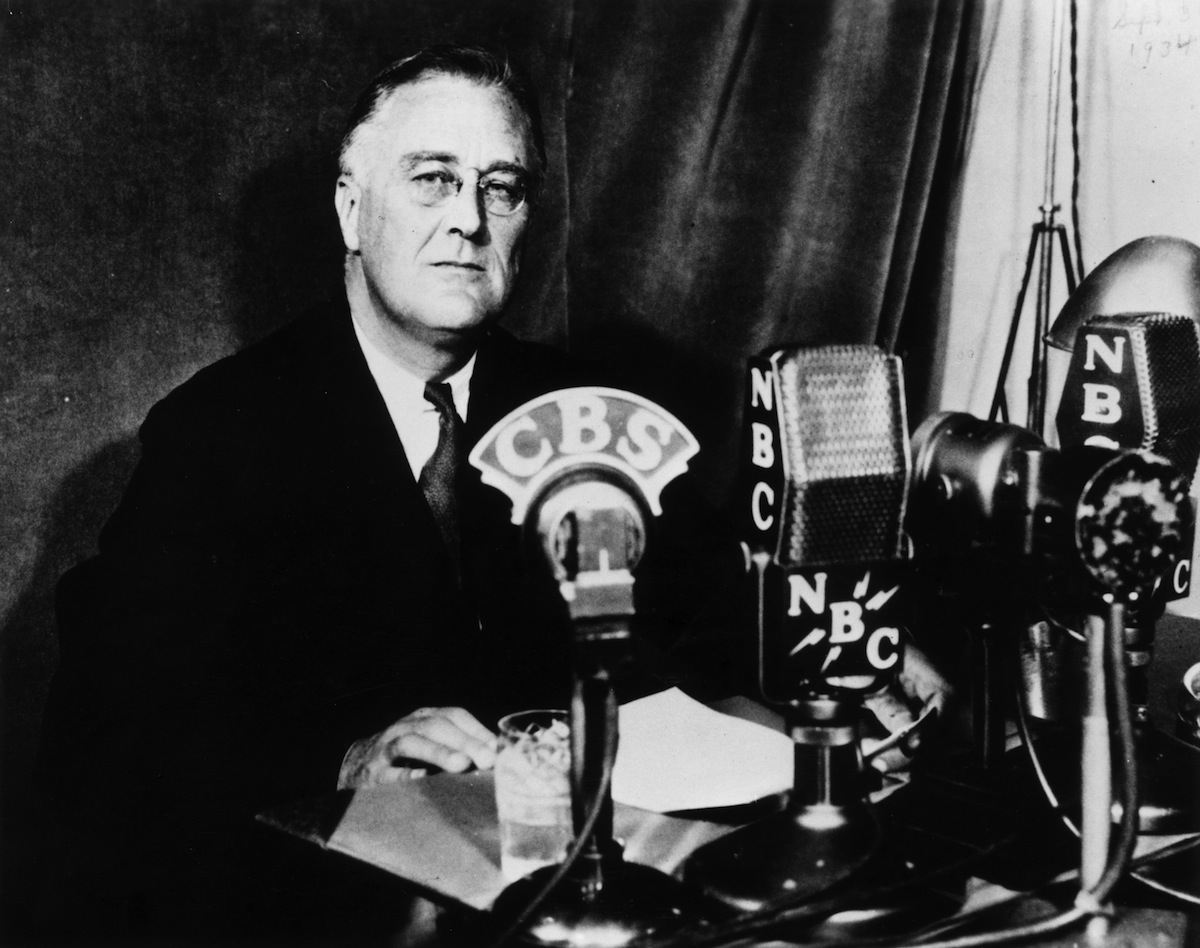
March of 1933 was a terrifying month for Americans. A quarter of the nation’s workers were unemployed. Farmers and bankers alike suddenly lost their livelihood. Stocks were down 75% from 1929 — and in those four years the suicide rate had tripled.
In New Orleans, hundreds of tourists in town for Mardi Gras found themselves stranded on March 2, with no money to get home, after Louisiana shuttered its failing banks. By the next day, 21 more states had followed suit. When Franklin Delano Roosevelt took office on March 4 — the last such term of office before Inauguration Day moved to January — his first act was to declare a national bank holiday to stall the run on banks that was quickly liquidating the Federal Reserve.
It was under these grim circumstances that FDR broadcast the first of his 30 “fireside chats” on this day, March 12, in 1933. These speeches, and his frank, down-to-earth manner, may have been the most effective tactic used to soothe the panicked public since the beginning of the Great Depression.
His language was inclusive. “My friends,” he began, “I want to talk for a few minutes with the people of the United States about banking.”
And it was intentionally simple. “I recognize that the many proclamations … couched for the most part in banking and legal terms, ought to be explained for the benefit of the average citizen,” he went on. “I owe this in particular because of the fortitude and the good temper with which everybody has accepted the inconvenience and the hardships of the banking holiday.”
These fireside chats were not literally delivered by the fireside. As TIME noted in 1937, they were broadcast from the White House Diplomatic Room, which has no fireplace. But the speeches, which ran anywhere from 11 minutes to more than 40 — depending on the speech itself and the number of “persuasive pauses,” per TIME — gave Roosevelt a chance to explain and defend his New Deal policies. They were known for their comforting effect on an uneasy populace, as much during the Depression as they later were during World War II.
While future presidents followed FDR’s lead, using the technology of their times (Obama broadcasts his own addresses via YouTube and has reached out to millennials on Reddit, Instagram and Twitter), it would be difficult to name anyone who did it better than Roosevelt. After this first chat, he was inundated with fan mail from listeners who felt they now knew him intimately. Herbert Hoover had averaged 5,000 letters a week; FDR got 50,000, according to “FDR’s First 100 Days,” a publication by the Franklin D. Roosevelt Presidential Library & Museum.
“The broadcast brought you so close to us, and you spoke in such clear concise terms, our confidence in the Bank Holiday was greatly strengthened,” wrote one California woman.
She was not alone. Sixty million people listened to Roosevelt’s first radio address; the next day, per the Roosevelt Library, “newspapers around the country reported long lines of people waiting to put their money back into the banks. The immediate crisis had passed.”
Read original 1933 coverage of the state of the economy at the time of Roosevelt’s inauguration, here in the TIME archives: The Presidency: Bottom
More Must-Reads from TIME
- Cybersecurity Experts Are Sounding the Alarm on DOGE
- Meet the 2025 Women of the Year
- The Harsh Truth About Disability Inclusion
- Why Do More Young Adults Have Cancer?
- Colman Domingo Leads With Radical Love
- How to Get Better at Doing Things Alone
- Michelle Zauner Stares Down the Darkness
Contact us at letters@time.com